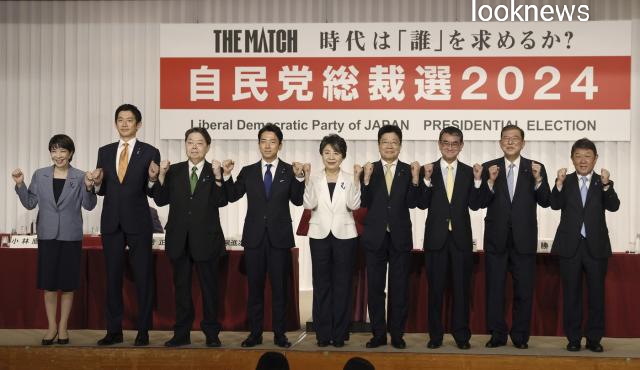Japan’s ruling party will vote for a new leader on Friday, following Prime Minister Fumio Kishida’s announcement last month that he will not seek re-election.
The new head of the conservative Liberal Democratic Party (LDP), which has largely governed Japan since World War II, will become prime minister due to the party’s majority in parliament. However, the election comes during a challenging time for the LDP, facing scandals and internal conflicts that have weakened its powerful factions.

Nine candidates are running, the most in the LDP’s history, with three leading contenders presenting very different ideas for Japan’s future
The first candidate is Shigeru Ishiba, 67, a former defense minister running for the LDP leadership for the fifth time. Ishiba is known for his straightforwardness and public criticism of Prime Minister Kishida, which has upset some party members but appealed to the public.
Another popular candidate is 43-year-old Shinjiro Koizumi, the youngest in the race. He brings a fresh perspective and promises to reform the LDP. Koizumi, the son of former Prime Minister Junichiro Koizumi, is favored by younger voters and women, though some critics say he lacks experience.
The third candidate is Sanae Takaichi, 63, who aims to be the LDP’s first female leader. A close ally of the late Prime Minister Shinzo Abe, Takaichi is one of two women in the race and is more conservative compared to the others.
Takaichi’s views on women’s issues differ from those of Koizumi and Ishiba. Koizumi supports allowing women to keep their maiden names, while Ishiba is in favor of having female emperors, a controversial topic within the LDP. Takaichi opposes both ideas, arguing they go against tradition.
The winner of Friday’s vote will be chosen by the party members, not the public. However, all the frontrunners have promised to reform the struggling LDP amid public anger and falling approval ratings.
“In the upcoming election, we need to show the people that the Liberal Democratic Party will change,” Prime Minister Kishida said last month when he announced he would not run again.
This leadership contest is not just about the top job; it’s also about rebuilding public trust that the party has lost due to a stagnant economy, struggling households, and several political scandals.
Key issues include the influence of Japan’s controversial Unification Church within the LDP and allegations that party factions underreported political funding over the years. The fallout from these scandals has led to the breakup of five out of six factions in the LDP, which have historically been essential for winning leadership elections.
Japan’s ruling party will vote for a new leader on Friday after Prime Minister Fumio Kishida announced he wouldn’t run for re-election. The new chief of the Liberal Democratic Party (LDP), which has governed Japan for most of the post-war period, will become prime minister due to the party’s parliamentary majority. This election occurs during a turbulent time for the LDP, facing scandals and internal conflicts that have weakened its powerful factions.
Nine candidates are competing, the most in the LDP’s history, with three leading contenders:
1. **Shigeru Ishiba**, 67, a former defense minister known for his blunt criticism of Kishida, appealing to the public but upsetting party members.
2. **Shinjiro Koizumi**, 43, the youngest candidate, seen as a fresh face who promises reform. He is favored by younger voters and women but criticized for his lack of experience.
3. **Sanae Takaichi**, 63, who aims to be Japan’s first female leader. She is more conservative and opposes reforms that break with tradition, such as allowing women to keep their maiden names.
The winner will be chosen by an internal party vote. All frontrunners promise to reform the LDP amid public dissatisfaction and declining approval ratings. Key issues include the party’s ties to the controversial Unification Church and political funding scandals that led to the breakup of many LDP factions.
Economic struggles, including rising prices and stagnant wages, have further damaged the LDP’s reputation. As Japan faces an aging population, the new leader will also need to address labor market issues and attitudes toward immigration.